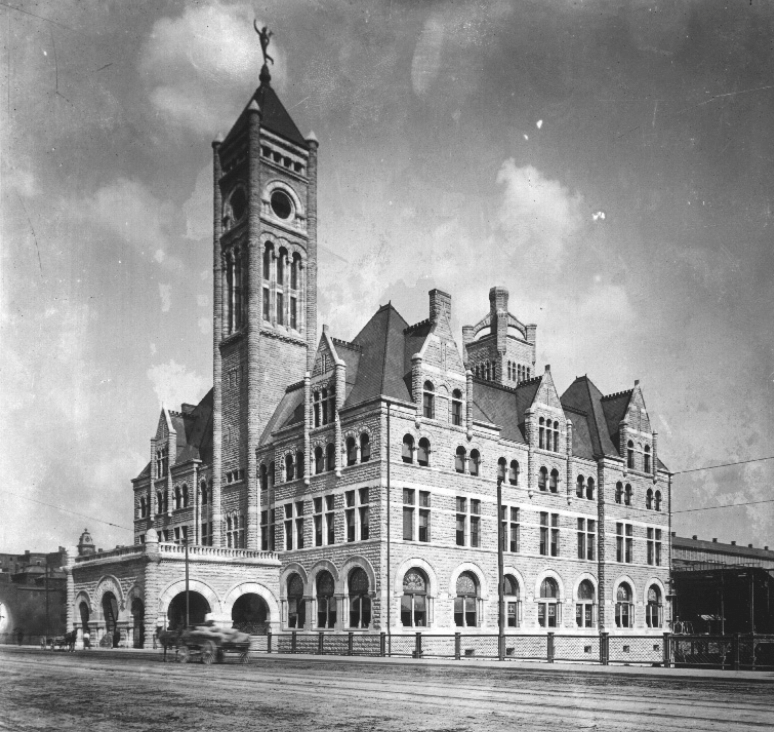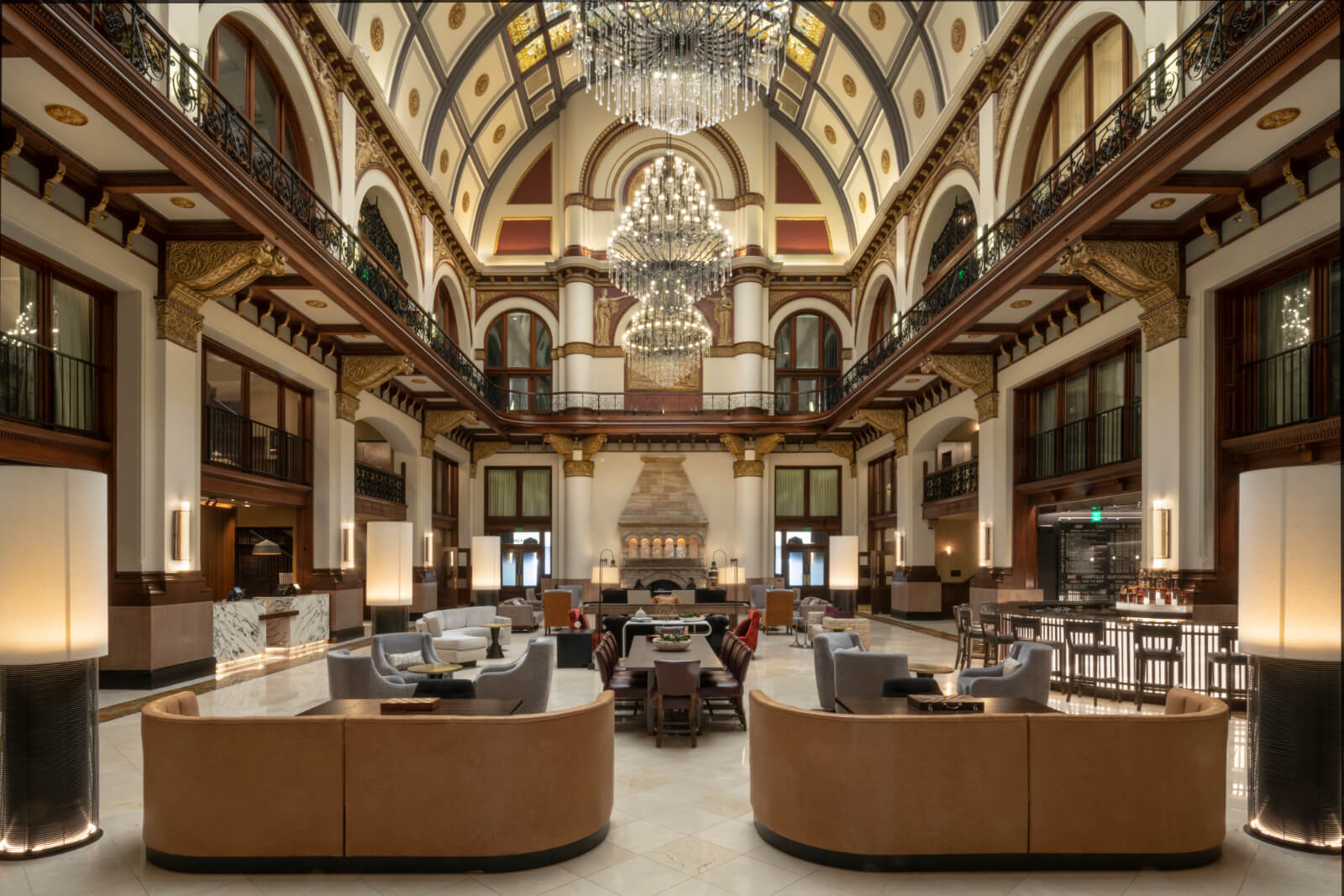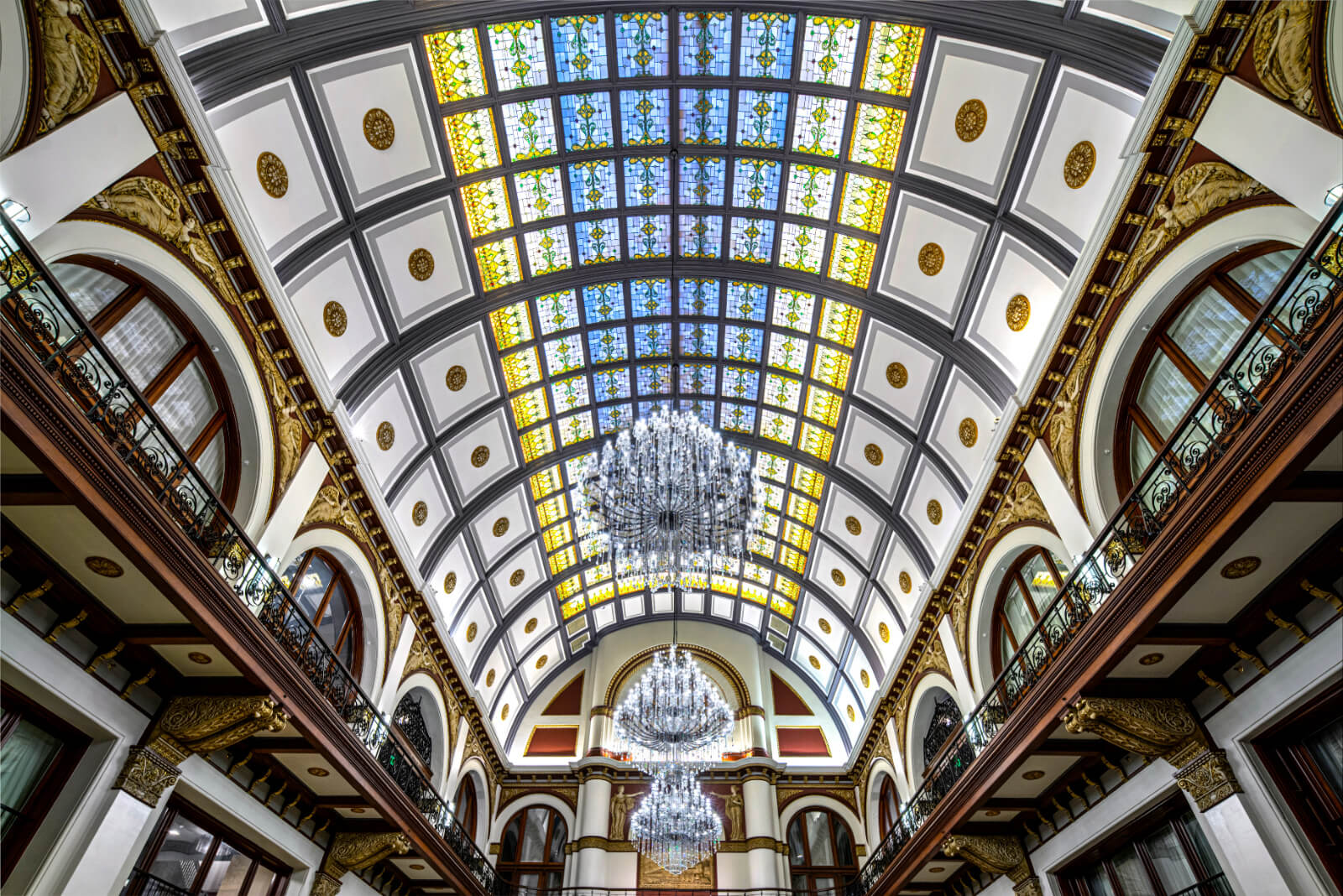Several months ago, we featured The Southern Turf Building, one of Nashville’s stunning architectural gems. We’re all about an intriguing past with untold secrets! This time around, we’re delving into the rich character and history of one of Nashville’s landmark structures — Union Station. From infamous gangsters to destructive tornadoes, this building has its share of stories to tell.
The Union Station Nashville Yards has been an iconic landmark on Broadway’s main thoroughfare since the start of its construction in 1898. Located in the heart of Downtown, the former train station is an architectural legend — from its Gothic turrets and limestone fireplaces to its roughly 70-foot barrel-vaulted lobby ceiling and stained glass.
But Union Station’s grandeur doesn’t solely rest with its structural beauty. The backstories are equally captivating! Officially opening to the public on October 9, 1900, it served as Nashville’s central train terminal for the L&N Railroad until 1979. It also served as a USO site through both World Wars, and rumor has it that notorious mobster Al Capone was escorted through the station on his way to the Atlanta penitentiary.
Did we mention that the early 1900s also saw two track-level pools containing live alligators? That’s right. We said alligators.

But Union Station’s stories were suspended for a time as the train depot closed. “Our last train came through in 1979,” says Sales and Event Manager Trevor Johnston. “If I remember correctly, there were about 27 people on the last passenger train that came through the station.”
Years of neglect followed its closing, and the building succumbed to a number of challenges … including a colossal pigeon infestation. “It sat there for about seven years or so — pretty much from 1979 until 1986 when it reopened as a hotel,” Trevor explains. “It was left exposed to the elements.”
Fortunately, someone had the foresight to salvage some of the building’s standout pieces. “They were able to take down some of the most important pieces, like the stained glass at the top of the barrel-vaulted ceiling,” says Trevor. “They supposedly took down every panel and held them in storage so they wouldn’t get damaged. But a lot of the other glass on the property — the normal windows and such — was badly damaged by birds, weather, or people vandalizing the building.”

As luck would have it, two hoteliers looking to expand to Nashville stumbled across the old train depot in 1985 and couldn’t resist the late Victorian Romanesque Revival architecture. “They had been going up and down Broadway; they saw Union Station and thought, Why not here?” says Trevor.
The renovation breathed new life into the building while simultaneously retaining many of its most expressive historic details. The three limestone fireplaces, for example, are still focal points of the design — in particular, the grand fireplace in the lobby, which serves as a reminder of the storied history of the First and Second World Wars.
“There were a number of marriages inside the building right before people were shipped off and deployed,” Trevor shares. “I believe the first wedding we have a written record of was in 1910. And that happened in front of the fireplace. It’s a big part of our history, and we lean into it when people choose to get married here at the hotel and become part of our history. We always encourage them to say ‘I dos’ in front of that amazing fireplace.”

Union Station offers other notable features, such as marble flooring, elaborate grand arches, oak-accented doors, and dazzling lobby chandeliers. And all of them tell a story.
“When you first walk into the building, you’re actually on the third level; the building goes down two more floors beneath that,” Trevor tells us. “But the fourth and fifth floors that you see from the lobby are surrounded by arches, and each of those arches has angels attached.”
“The design for the angel was modeled after architect Richard Montfort’s daughter, who was used as the muse for the angels’ faces,” he continues. “Each of them is holding a different good in their hand — items that used to pass through on trains once upon a time. So, you’ll see things like tobacco and wheat. There’s also a really intimidating bull that looks like it’s staring you down when you’re sitting at the restaurant’s host stand, which is amazing.”
You might even spot pieces of the original marble flooring that used to grace the train station lobby. “An original section of flooring can still be found in the back of Ergo, the lobby bar,” says Trevor. “They preserved it and covered it with an enamel coating to protect it. But once upon a time, the entire lobby was filled with a hand-cut, hand-laid mosaic tile. You can still see the fleur de lis patterns scattered throughout the space in that area. It’s beautiful — a really unique time capsule.”
A unique time capsule, indeed.
**********
For a daily dose of StyleBlueprint sent to your inbox every morning, click HERE!



















